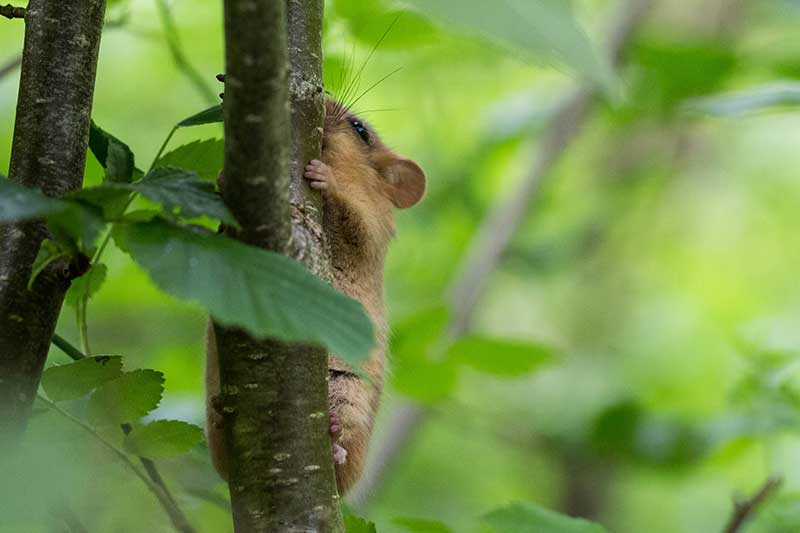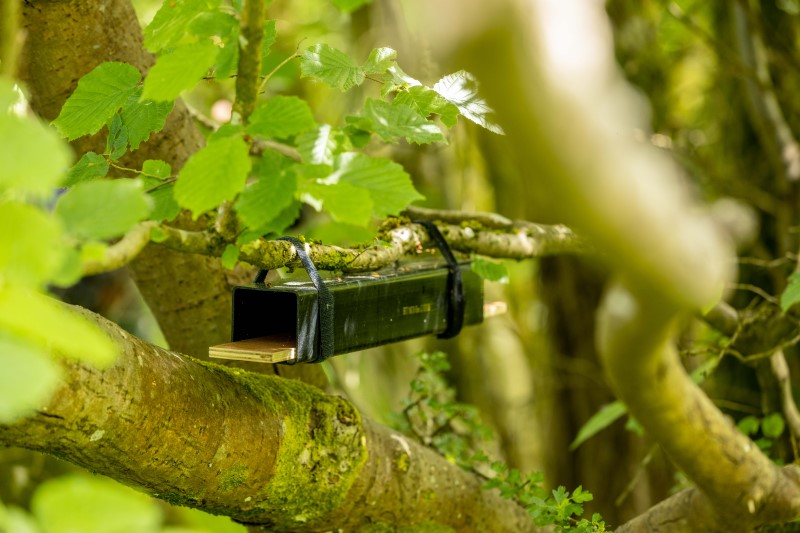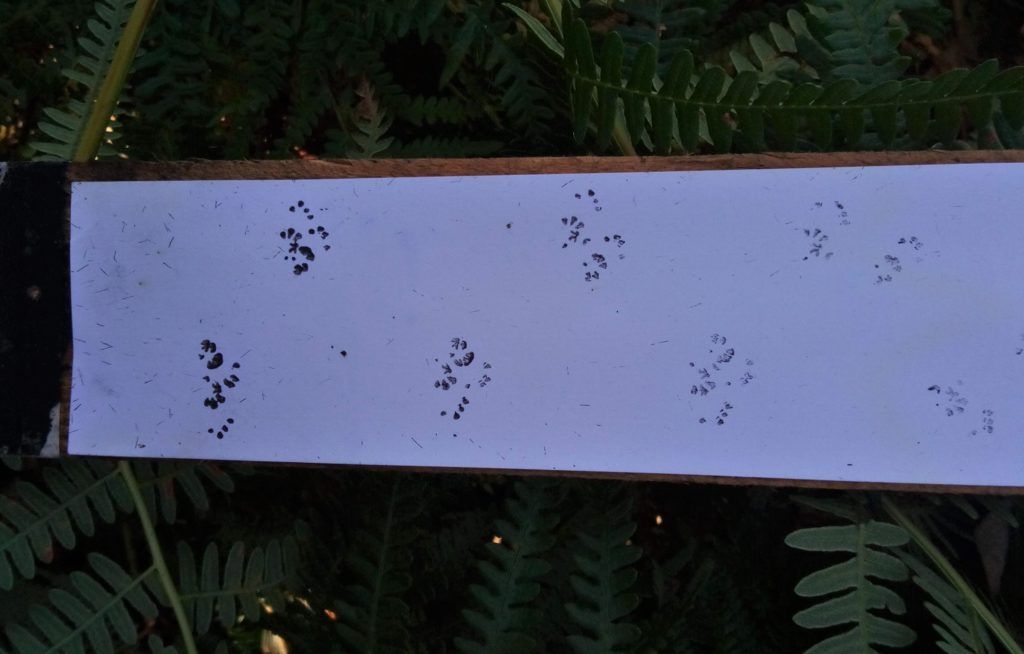Gaining key insights into how to manage hedgerows for dormice
Recently launched, the National Dormouse Footprint Tunnel Survey will use footprint tunnels to detect the presence or absence of the charismatic but rare hazel dormouse in hedgerows. The need for surveying hazel dormice is clear: it is thought that their population has halved in the last 22 years alone. By combining footprint tunnel surveys with the Great British Hedgerow Survey, we might also gain some key insights into how to optimally manage hedgerow habitats for this iconic species.
How to gather information from footprint tunnels
The tunnels themselves consist of black square downpipe. Inside, a strip of white card attached to a plywood tracking plate is placed, with a homemade charcoal / olive oil ‘ink’ applied at either end. The inquisitive nature of dormice encourages them to explore the tunnels. Their presence is recorded through the presence of footprints with one tell-tale feature in particular; the hazel dormouse has distinctive triangular-shaped pads on both the hind and front feet.
Unlike previous surveys, the National Dormouse Footprint Tunnel Survey provides a systematic means of surveying the presence of dormice across Great Britain. Probability scores, showing the likelihood of detecting dormice if they are present, have been calculated. These scores depend on survey effort there is, for example, a 95.6% chance of detecting a dormouse if present when 20 footprint tunnels are placed along a hedgerow for a period of 10 weeks. Footprint tunnel surveys have the added benefit of not requiring a dormouse license.
Although Bright and McPherson (2002) found that the range of dormouse presence in hedgerows declined by 64% between 1970 and the turn of the 21st Century, we don’t actually have an extensive knowledge of which hedgerows dormice are using. We do know that a higher dormouse abundance is associated with taller hedges and that dormice are associated with species-rich, particularly ancient hedgerows. Being successional feeders and eating a varied diet throughout the year, this is unsurprising.
Combining the Great British Hedgerow Survey
The Great British Hedgerow Survey asks keys questions linked to, for example, the density of vegetation at the base of a hedge, the percentage cover of woody plant species and the position of a hedgerow in the hedgerow management lifecycle. Regarding the last point this refers to the structure of a hedge from H1 to H10, the former being the most over-managed hedge and the latter being the most under-managed and having turned into a line of trees. H5 to H7 structures all constitute healthy and dense hedges but that differ in features such as whether they are ‘neat’ or have more ‘straggly’ branches.
Building on our knowledge
The new National Dormouse Footprint Tunnel Survey may subsequently help to build on our knowledge of how dormice use hedges. Which combinations of woody plant species are optimal? Which hedgerow structures (H1 to H10) will they use and what extent of over-management will they tolerate? There are many potential directions in which the research could go. All data will help to inform conservation action and help protect this enigmatic and charming little species long into the future.
PTES may be able to help with the supply of a footprint tunnel kit; if you’re interested, please contact Ian White at ian.white@ptes.org. Take part in the National Dormouse Footprint Tunnel Survey here:



